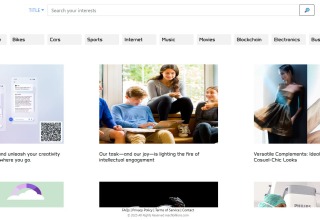In the ever-evolving landscape of internet connectivity, remote peering has emerged as a transformative solution for businesses looking to enhance their network performance without the need for extensive physical infrastructure. Remote peering allows organizations to connect to Internet Exchange Points (IXPs) from a remote location, leveraging existing data centers or direct Layer 2 connectivity. This approach offers a host of benefits, including reduced latency, improved access to global content and cloud providers, and a significant portion of the global internet routing table through bilateral peering arrangements and route servers.
What is Remote Peering?
Remote peering is the process of connecting to an IXP without being physically present at the exchange’s location. Traditionally, to participate in an IXP, a business would need to have equipment and presence at the exchange’s data center. However, with remote peering, companies can connect to IXPs through intermediary data centers or direct connectivity options, bypassing the need for on-site infrastructure.
This method is particularly advantageous for organizations that want to expand their network reach and performance without the overhead costs associated with setting up and maintaining equipment at multiple IXP locations. By using remote peering, businesses can efficiently interconnect with a wide range of networks, including content delivery networks (see Wikipedia), cloud service providers, and other access networks.
Benefits of Remote Peering
- Lower Latency: By connecting directly to major IXPs, remote peering significantly reduces the distance data needs to travel, thereby lowering latency, says Cloudflare. This results in faster data transmission and improved user experience.
- Cost Efficiency: Remote peering eliminates the need for physical infrastructure at multiple IXP locations. Businesses can avoid the costs associated with data center space, equipment, and maintenance, resulting in substantial savings.
- Enhanced Network Reach: With remote peering, companies can access a large portion of the global internet routing table. This broad connectivity allows for better performance and reliability in data transmission.
- Scalability: Remote peering provides the flexibility to scale network connections as business needs grow. This scalability is crucial for businesses looking to expand their network presence without significant investment in physical infrastructure.
Why Choose Exascale for Remote Peering?
Exascale offers a comprehensive solution for remote peering, making it easier for businesses to connect to major European Internet Exchange Points from anywhere in the UK. Here are some compelling reasons to choose Exascale:
- Seamless Connectivity: Exascale provides seamless Layer 2 connectivity from your data center or building to various European IXPs. This direct connection ensures lower latency and optimal network performance.
- Broad Network Access: By using Exascale, businesses can interconnect with content providers, cloud services, and access networks, gaining up to 70% of the global internet routing table through bilateral peering arrangements and route servers.
- All-Inclusive Contracts: Exascale simplifies the remote peering process by offering all-inclusive contracts that cover IX membership and transport costs. This streamlined approach reduces administrative overhead and ensures a hassle-free experience.
- Infrastructure Savings: With Exascale, there’s no need for additional equipment or data center space. This not only saves on capital expenditures but also reduces ongoing operational costs.
- Presence on Major Exchanges: Exascale enables businesses to be present on all of the UK’s largest internet exchanges without the need for extra infrastructure. This extensive reach is vital for organizations looking to enhance their network performance and reliability.
How to Get Started with Exascale
Connecting to major European metropolitan Peering Exchange Points has never been easier. With Exascale, businesses can leverage data center cross-connects or Layer 2 connectivity to their building or data center, ensuring a robust and efficient network presence. To get started, simply reach out to Exascale for a quote and take the first step towards optimizing your network connectivity through remote peering.
Remote peering is a game-changer for businesses looking to enhance their network capabilities without significant investment in physical infrastructure. Exascale stands out as a top choice for remote peering, offering seamless connectivity, cost efficiency, and extensive network reach. By choosing Exascale, businesses can enjoy the benefits of being connected to major internet exchanges while maintaining a streamlined and scalable network infrastructure.





















